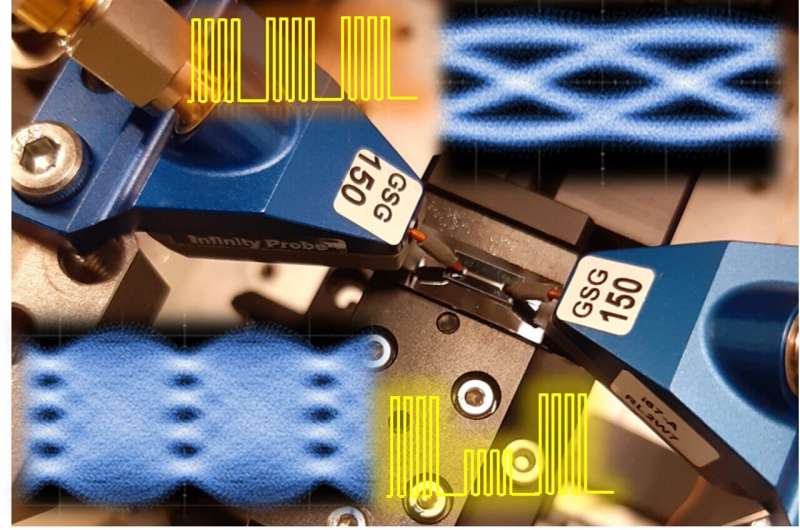Beyond 5G: New optical modulator can operate at 10 times the speed of current devices
Kyushu University researchers have successfully developed an ultra-high-speed optical modulator that can operate at more than 10 times the speed of current devices. This modulator was made thanks to a new method the team developed that allowed them to grow thin films of ferroelectric crystals on silicon substrates.
Optical communication technology is the bedrock of our modern internet. Thousands of kilometers of fiberoptic cable are laid across the globe, providing the data needed for our modern digital age. Transferring that data is done using light, hence the need for fiberoptic material that can contain said light between major distances.
“Optical fiber traffic is rapidly increasing year by year, and the need for devices and systems capable of faster transmission is growing. Devices called optical modulators are critical for this future,” explains Professor Shiyoshi Yokoyama of Kyushu University’s Institute for Materials Chemistry and Engineering and who led the study published in Communications Materials.
“Optical modulators are devices that help generate high-speed signals from optical fibers. They can convert or change things like the intensity, phase, or frequency of the light using electrical signals.”
One of the biggest hurdles in making ultra-high-speed optical data transmission is in finding the right materials capable of providing such speeds. Today, optical modulators are being built from semiconductors, inorganic crystals, and even polymers. Yokoyama and his team focused on a type of material called ferroelectric crystals, a material that exhibits spontaneous electrical polarization.
“These materials have high electro-optic effects and are prime candidates to be optical modulators. However, it has been difficult to form them into the thin films necessary for use in optical devices,” continues Yokoyama. “Thankfully, our team was able to develop a method that helps to grow ferroelectric crystals on thin films of silicon.”
The material, that the team is calling PLZT, was developed into an optical modulator that was 2.5 mm in length. Following tests, they found that their new ferroelectric modulator exhibited modulation of up to 170 Gbps—operating 10 times higher than existing devices—and a transmission rate of more than 300 Gbps using a four-level pulse modulation.
The team hopes their research can be utilized in future optical network transmissions technologies, as well as support future 6G technologies and optical quantum computers.
“The demand for higher data speeds in optical fiber communications will continue to grow, and data centers will require higher density signal transmissions and processing. I expect our new optical modulator will contribute to this continually expanding industry,” concludes Yokoyama.
More information:
Jiawei Mao et al, Ultra-fast perovskite electro-optic modulator and multi-band transmission up to 300 Gbit s−1, Communications Materials (2024). DOI: 10.1038/s43246-024-00558-5
Kyushu University
Citation:
Beyond 5G: New optical modulator can operate at 10 times the speed of current devices (2025, January 7)
retrieved 8 January 2025
from https://techxplore.com/news/2025-01-5g-optical-modulator-current-devices.html
This document is subject to copyright. Apart from any fair dealing for the purpose of private study or research, no
part may be reproduced without the written permission. The content is provided for information purposes only.

Comments are closed